Disclosure: Meeple Mountain received a free copy of this product in exchange for an honest, unbiased review. This review is not intended to be an endorsement.
Agricola. Just saying the name makes me think of all the times I’ve played the iOS app version of the game, against those sneaky AI opponents in 3-player games sitting on flight after flight for my job at an IT consulting company.
Agricola is a great game, but punishing to the end – it’s also long, really long. It’s the only board game I’ve loved that I also intentionally never played in person; I’ve heard stories of 4-player games of Agricola taking 5 hours or more.
This is because Agricola causes the kind of “analysis paralysis” that I run from like the plague. Players staring at the remaining action spaces on the board, thinking three rounds into the future. Analyzing which of the two terrible actions left are slightly less terrible, all while rueing the moment they decided to play that Occupation card when those juicy sheep were out there to take instead.
Decisions in Agricola are agonizing, and they can destroy the soul of even the kindest human beings in gaming.
Our team at Meeple Mountain have committed to reviewing every game in the BGG Top 100, and when I learned that we had not reviewed Uwe Rosenberg’s Agricola follow-up, Caverna: The Cave Farmers (2013, Lookout Games/Asmodee), I worked to right that wrong quickly.
Caverna is almost 10 years old. Does it hold up? Better than ever, my friends.
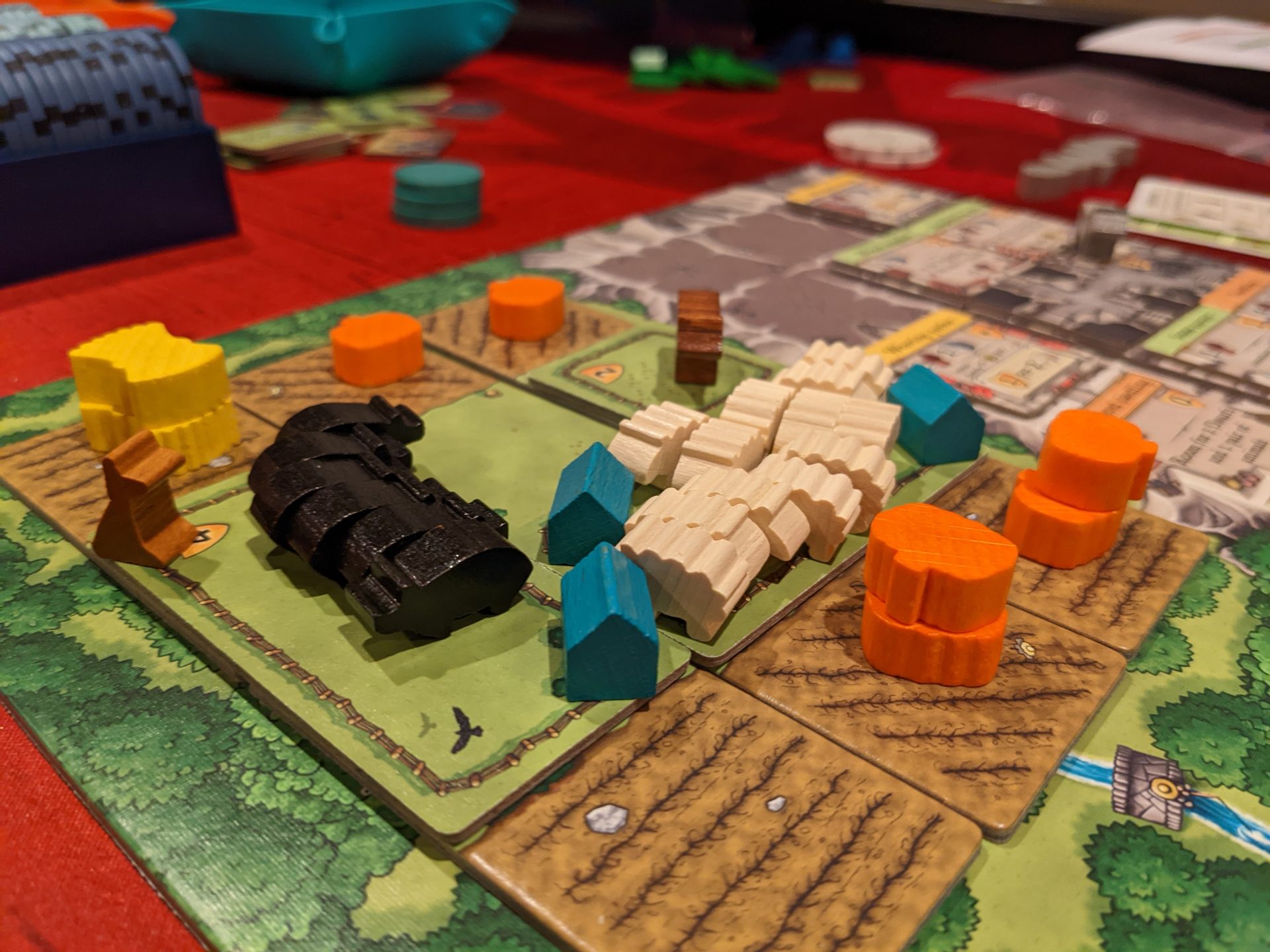
Brass: Birmingham? Ahh, I See Now
As I commented in my piece comparing the two Brass games, Lancashire and Birmingham, I noted the one distinct difference between the two productions: one is just a little easier.
Note, that this does NOT mean that either game is easy. Rather, Birmingham is just a little more forgiving as players move from turn to turn. Certainly, there are lots of opportunities to visualize a strategy and then execute a plan; it’s especially fun to work through the changing landscape of the board from round to round.
I loved Caverna from my first play because it captures all of the things that make Agricola special, and then adds a completely new game system—Expeditions—that opens up play while still forcing players to make interesting decisions.
It would be silly to try and recite all of the rules in both Caverna and Agricola here because they are such difficult games to teach. Both are worker placement games that reward variety—doing all of each game’s actions, and producing all manner of crops, resources, and buildings while filling up every space on your player board are paramount to achieving a high score.
And the similarities help new Caverna players who have logged lots of time playing Agricola. In Agricola, it’s the 17th century and players are trying to survive as a human couple tasked with growing their farmland: sow crops, manage the animals on your farm, cut down some trees, build a larger hut, go fishing for food, and add a stone oven.
In every round, you have to figure out how to use your two workers to get enough stuff to survive till harvest time, and every round is a knife fight for space thanks to the worker placement rules of the game. Adding kids who will eventually grow strong enough to do the tasks of the adults in the family gives you more workers, but then you’ve got to figure out how to feed everybody every round.
My brain hurts just thinking about how to balance everything in Agricola. This really hits when I think about the limited action spaces in the game, and the fact that it always feels like there is one space that everyone is fighting for every round. Plow One Field and/or Sow comes to mind. Or maybe it’s that space that only shows up in round 14 when you want to build fences and improvements and have kids and breed cattle.
Wait; there is no space like that!
But Agricola is tight. Many people I know swear it’s the greatest game ever made. I think Agricola is really good, but now that I’ve played Caverna, the debate is over.
Caverna is the better game, because you can do everything while still providing a very tense gaming experience.
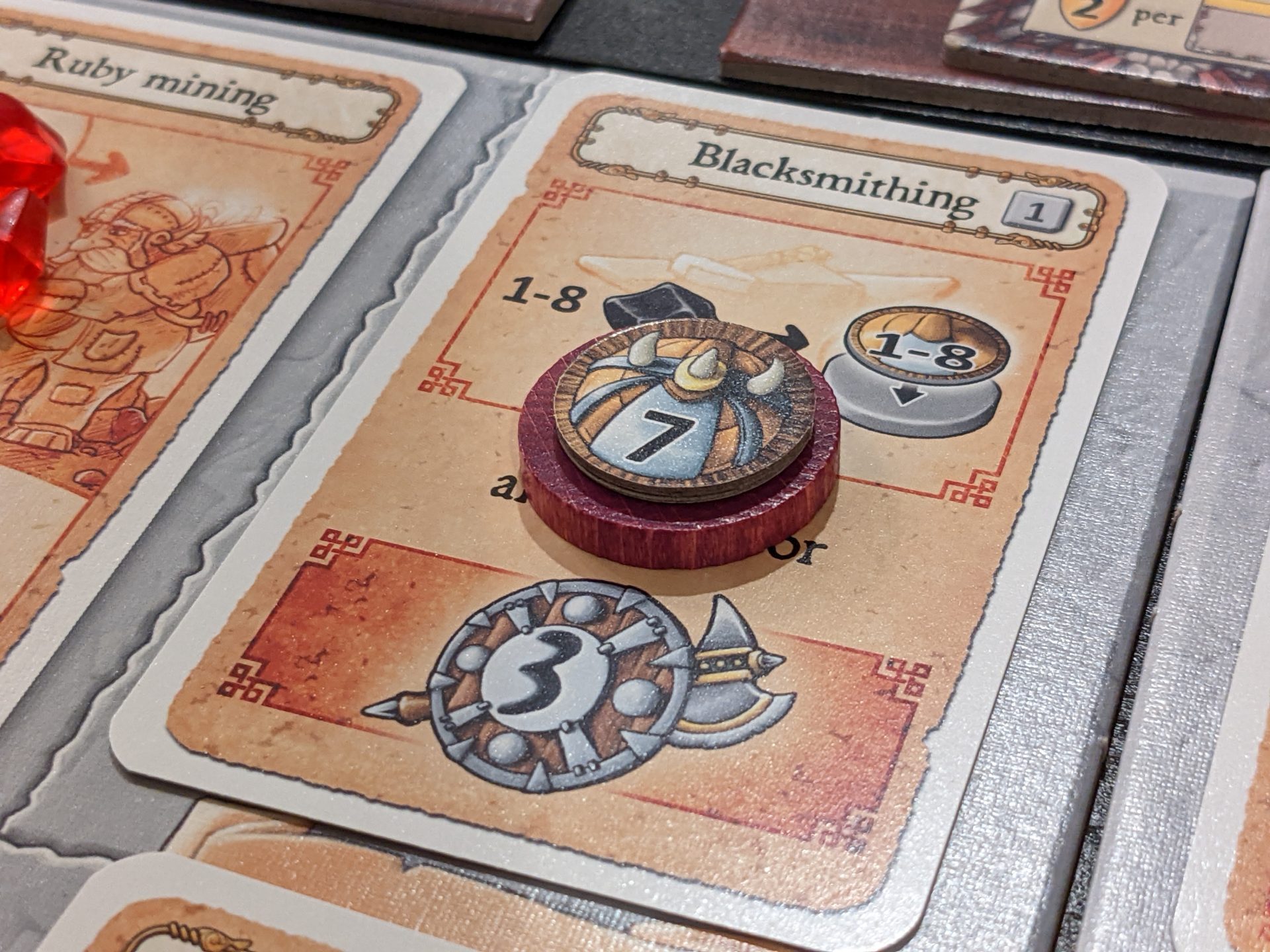
More, More, More
Caverna is still a worker placement game, and it brings many of the Agricola rules to the table. (So much so that the rulebook highlights new rules in Caverna for veteran Agricola players.)
This time around, you’re a dwarf, living in a cave with your dwarf partner, and you’ve gotta score more points. Remember how an average score in Agricola was, what, 30 or 35 points? In Caverna, it’s 80.
That higher score reflects the main reason I love Caverna and its mechanics. It’s a worker placement game, but there are a ton more viable places to go every turn. The game has more animals; now, instead of just breeding sheep, wild boars and cattle, you’ve got donkeys, and you’ve got dogs (dogs can’t be bred, but they help corral all of those sheep you’ve got running amok).
You can still grow your pastures. Or you could build out your cave, which takes up one half of your player board. Tunneling inside your cave can yield big rewards, like rubies, which now serve as a wild resource used to get you almost anything else in the game.
Caverna has a higher player count (7 at the max, instead of just 4). It has more resources. It scales up by adding more worker spaces. More spaces accumulate resources, so if no one goes after a space for a few rounds, the pile of stuff makes multiple areas too hard to pass up. Harvests still happen just once in the first stage (first 4 rounds), but in stages 2-4, there’s a random element that changes when the harvests show up.
There are a whopping 48 different tiles that can be built into your tableau; this variety is great, but it comes at a cost that might be the only major miss for me in Caverna: Occupation cards are no more. I enjoyed getting some direction from the Agricola format of being dealt (or drafting!) 7 cards that lay the groundwork for strategic planning before the game begins.
Here in Caverna, all players are staring at the same board without those excellent powers. This helps make the start of a game of Caverna better, at least for an Agricola veteran who knows what they should do to start play.

The Big Addition: Expeditions
Caverna adds the ability to arm your dwarf citizens with weapons, weapons that can be used on Expeditions to gather resources in the game world without having to get them all at specific worker locations.
Adding a token to your workers means they have forged a weapon, and these weapons range in level from 1-14. Every time an armed worker goes looting, they come back a little wiser, and loot doesn’t comprise just resources; you could add meadows, fields, tunnels and stables. You could “furnish” a room in your cave with a building that scores tons of end-game points.
I love the possibilities added into Caverna with Expeditions. I’m guessing that an experienced player really maximizes those efficiencies to perfection by not bothering to take certain board actions, using expeditions instead. But, even if a player is working on a strategy to only mind their outdoor space, sending a couple of dwarves out on Expeditions ends up being useful with lower-level tasks like grabbing grains, veggies, or sheep.
But I love pursuing the Expedition strategies with more seasoned dwarf warriors. And then I love the counterbalance: players have to send unarmed dwarves to action spaces before the armed ones, unless a ruby is paid to slide a dwarf up in the pecking order.
Expeditions are juicy and add a nice element to the game.
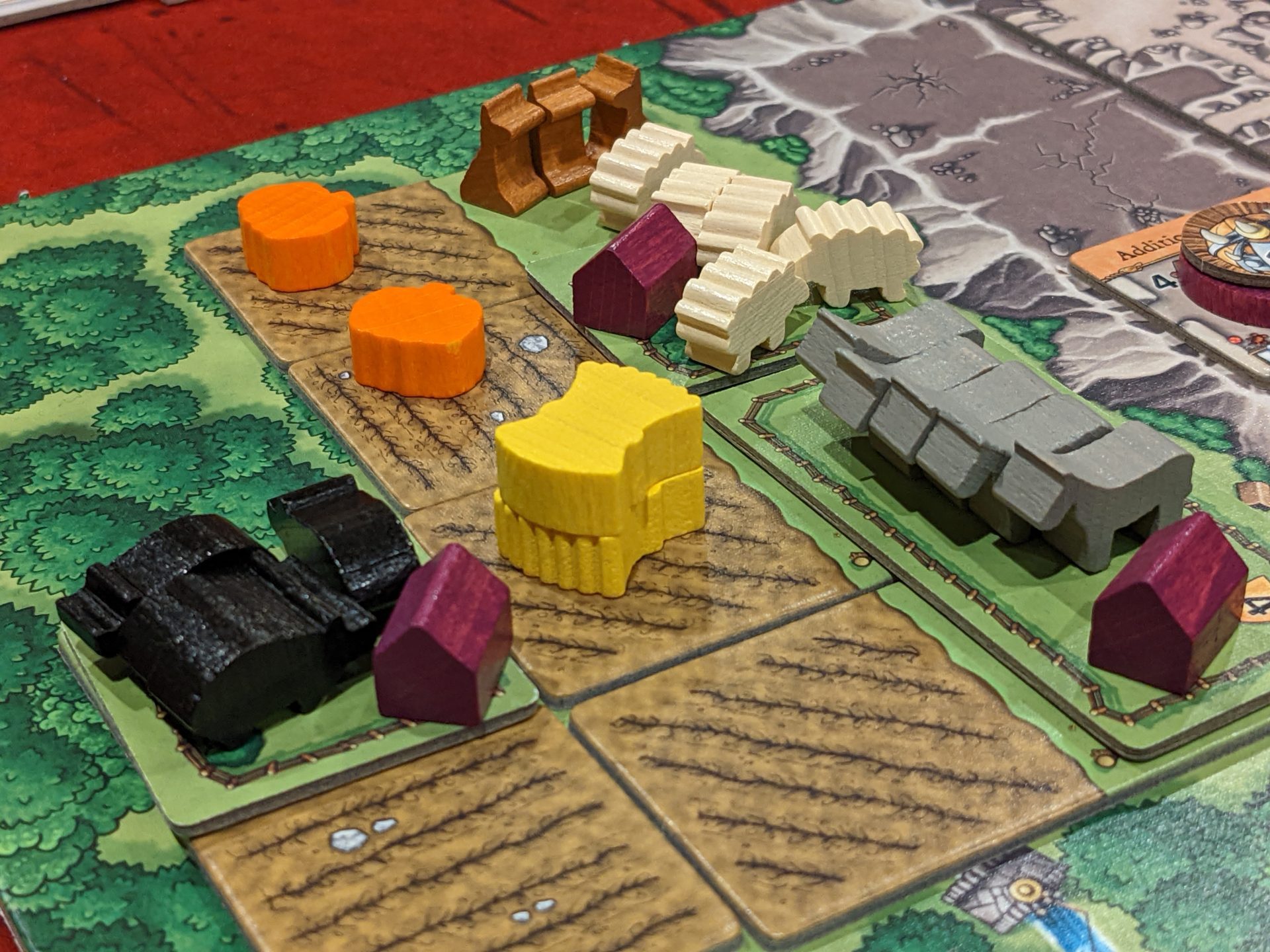
Solo Play
Caverna offers a solo mode, which essentially serves as a chance to high-score the game’s normal format. That means it’s easy to administer—no AI, no programming automa to worry about. That also means moving through turns is fast, and replenishing spaces that need more wood or rubies is also quick.
That also means it isn’t very interesting. If there was a Caverna app to play on my iPad, I would play that instead 100% of the time without human opponents. (For years, I lived off of the Agricola app, playing it at 3p—2 AI plus me—to learn the game.) Doubling down on the app idea, setting up Caverna is an absolute beast; in the ~2 hours it took me to set up, play twice solo, and tear down the game, I could for sure have gotten 3-4 plays in if there was an app.
It’s fun to herd wild boar in your pastures, but it’s not THAT much fun when playing solo!
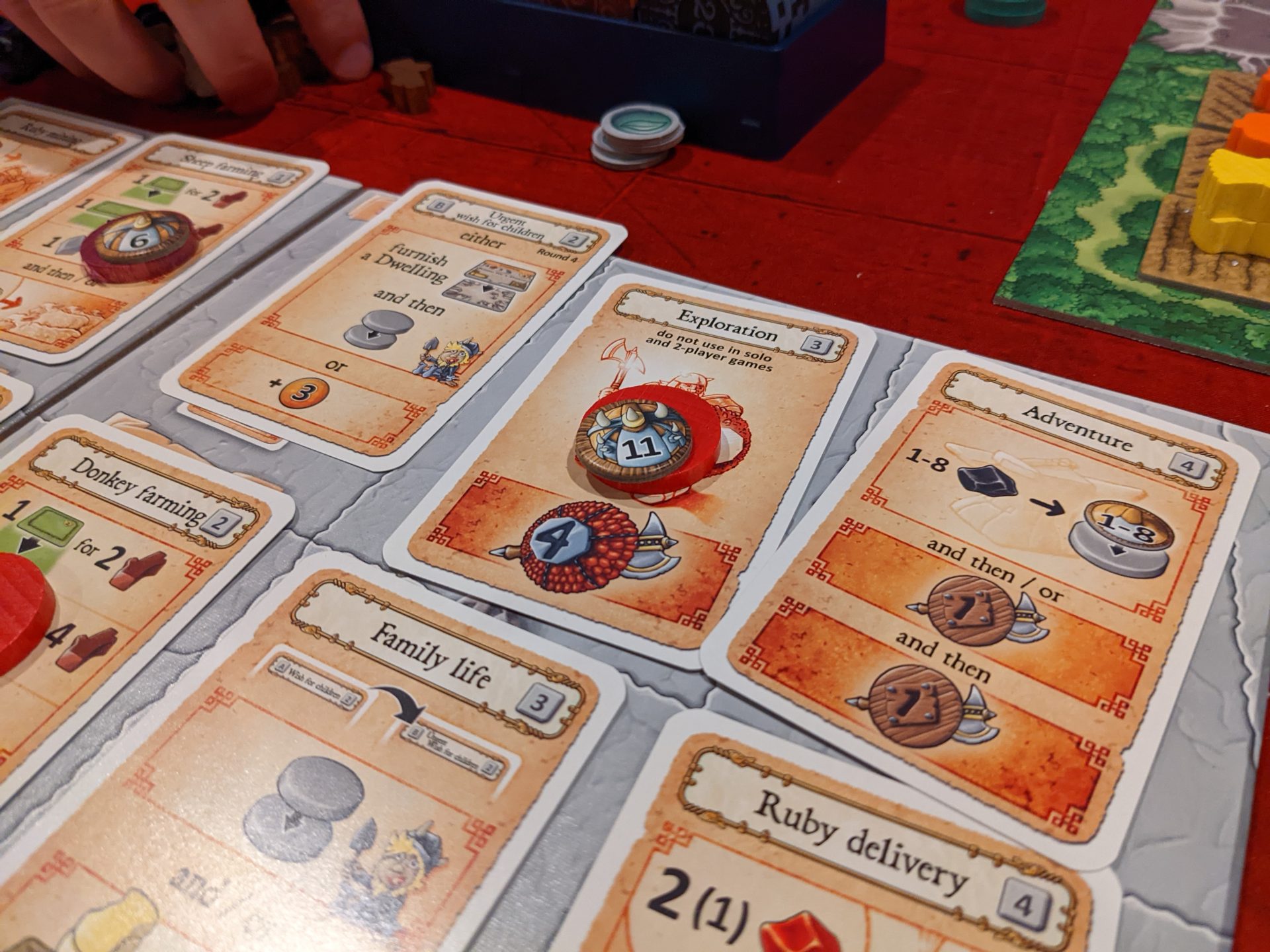
It Holds Up!
Caverna still works. As the friendlier take on Agricola, Caverna is the version of these two games that will hit my physical table more often.
There are lots of different paths to victory, and the buildings really stretch how each play will turn out. I’m frightened by the idea of playing this with a full player count of 7 players, but it’s amazing that the game even accommodates this many players. The decisions are crunchy and the interaction is interesting, as spaces are blocked off, sparking other creative ways to score points.
The physical production of this game also holds up after almost 10 years; the sheer weight of the box is quite telling. You’ll want an insert that helps with sorting all of the pieces if you are going to pull this off the shelf regularly, and with a game this old, Etsy and the internet at large offer plenty of great options.
I’m enjoying Caverna and I’m nowhere near the top of my game. Designer Uwe Rosenberg’s notes in the manual indicate that 80 is a good score and that advanced players will score 100 or more regularly. My highest score is 81 points so far (4 plays) so I’m excited to see how high I can go!


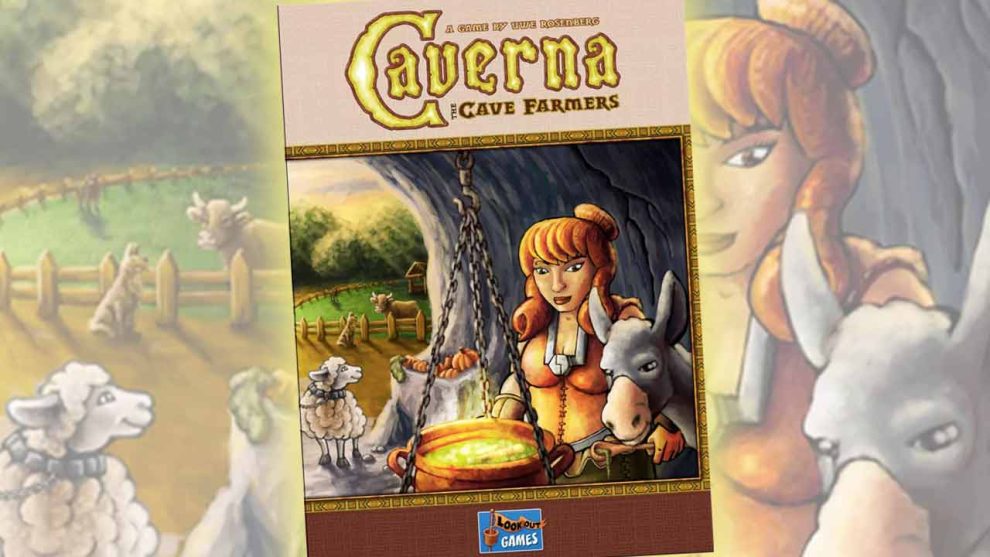









Add Comment